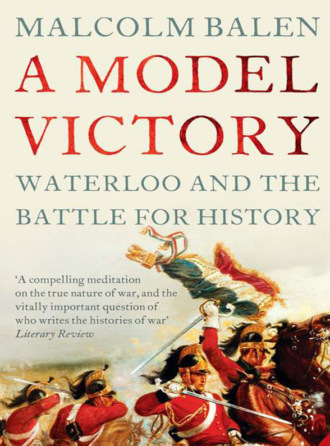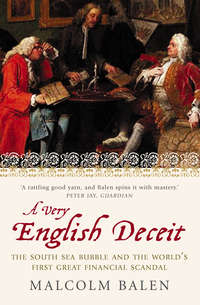
Полная версия
A Model Victory
So intense had been the fighting that the landscape was altered by the conflict, with the trees reduced to stumps. It was killing on the scale of the First World War, a century ahead of time.
It was fifteen years after the battle that William Siborne began his great project. He was invited by the commander-in-chief of the army, Lord Rowland Hill, a Waterloo veteran, to map the ground where the Battle of Waterloo had been fought, and from this to create a scale model, with the work paid for by public funds. Over the years which followed the Model grew in size and detail and ambition so that when it was finally finished few exhibition rooms in the land were large enough to hold it. Tens of thousands of toy soldiers, carefully crafted so that their different parts should move, came to take up their positions in the gently rolling landscape of its perfectly contoured terrain.
One of the reasons that Siborne was commissioned to map the land which came to grip his imagination was the threat that a housing development would scar the battlefield, altering irreversibly the scene of one of Britain’s most famous military victories. For eight months he stayed at La Haye Sainte farmhouse, the scene of some of the bloodiest fighting fifteen years before. Though he became obsessed by the need to map the terrain as accurately as possible, Siborne also determined to gather together the recollections of many of the surviving officers who had fought at Waterloo. His cartographic skills were unquestionable. But, to create his Model, Siborne had resolved to become a historian, too. To gather the information he needed, and arrive at what he hoped would be ‘a most faithful and authentic record of the battle despite the passage of time’ Siborne decided to send out a circular letter to British officers at the battle. From it, we get a clear sense of a precise, particular, man in search of historical accuracy:
Sir,
Having for some time been occupied in constructing a Model of the Field and Battle of Waterloo, upon a scale sufficiently large to admit of the most faithful representation of that memorable Action, I have accordingly the honour to request you will have the goodness to reply to the following queries, as far as your recollection and circumstances of your position at the time will admit.
What was the particular formation at the moment when the French Imperial Guards, advancing to attack the right of the British Forces, reached the crest of our position? What was the formation of the Enemy’s Forces?
Would you have the goodness to trace these formations, according to the best of your recollection, upon the accompanying Plan?
If Officers will, however, but favour me with their remarks and opinions, freely and without reserve, I trust that, by fairly weighing and comparing the data thus afforded me, I shall be enabled to deduce a most faithful and authentic record of the Battle, the surest means of imparting to the Model that extreme accuracy which in a work of this nature, not dependent like a pictorial representation on effect for excellence, must always constitute its real value.
I have the honour to be, Sir,
Your most obedient, humble Servant,
W. SIBORNE
Lieut.-Assist. Mil.Sec.
Siborne collected and kept his replies, the eyewitness accounts of the survivors of the battle, so that today we can read the handwritten evidence of the men who fought at Waterloo. Hundreds of letters with diagrams and maps, and thoughts and views, were gathered together in six volumes, the matter-of-fact commentaries of the men who survived the killing-fields.
The replies came in angular writing, usually in black ink but occasionally in blue, on paper large and small. Some were neatly written, and were well thought out. Others were written down without forethought, and with many crossings-out. Siborne also sent out maps which he had drawn and printed, to establish the exact location of the troops, and often these came back cut into smaller pieces to focus on a relevant sector, coloured-in or marked in pencil. There were letters from as far away as Corfu, from Ketley in Southampton, from Maltings in Suffolk, from Leamington, from Derby, from Mansfield, from Belper, Knutsford, Brighton, Edinburgh, and Kelso; in London, from Carlton Terrace, Bryanston Square, Portman Square and Woolwich. He had letters, too, from the Prussian general staff and some French marshals. One envelope addressed to The Captain Siborne, Royal Military Asylum, Chelsea was forwarded to a new address in Yorkshire with the sender’s name, the King of Prussia, casually written on the back. Today the large red seal of Le Roi De Prusse, bearing his crown, looks incongruous against the blue Post Office stamp which declares: Harrogate August 8 1848. A second envelope was simply sent to ‘Captain Siborne at Dublin, Officer of the Commander of the Forces’ and a third addressed ‘À Monsieur le Capitaine Siborne à Londres.’ As Siborne’s fame spread, both found their destination.
In addition to creating his extraordinary Model, Siborne came to write a history of the battle, based on these replies. In outlook, he was no different to the general run of historians of his time. He, too, was patriotic to a fault, and his history reflected his nationalism, but he was prepared to ask questions of the veterans, to list and document all their accounts. Nearly two hundred years on, these accounts read as if the battle had been fought yesterday. Siborne was prepared to go beyond a ritualistic celebration of national pride. He researched what actually happened, and then inch by inch, piece by piece, he tried to reconstruct events with the exactitude which might be expected from such a meticulous map-maker. But Siborne was to struggle with the obstacles history places in the path of its pursuers, trying to peel away the layers laid down by time, before he could begin to make sense of the material he had so patiently gathered together. For all his information-gathering, he was to find that history has a way of revealing itself, not always willingly, but obstinately, like a reluctant relative yielding up the hidden secrets of a family’s past.
For if history is a search for truth, and it was in exactly this spirit that Siborne embarked on the enterprise which would ruin him, then there are always forces which oppose it. And, unfortunately for the good officer, the truth can be maddeningly imprecise, if not lost for ever, then at least shrouded in the fog of time and war. It certainly does not always admit of the exactness which is needed when a terrain has to be mapped. Honestly held views and accounts have to be recorded, reconciled, crosschecked against a hundred others, sifted for evasions, exaggerations and misunderstandings. ‘You speak of the difficulties you have in reconciling different accounts of eyewitnesses,’ replied Major Evans of the 5th West India Regiment, to one of Siborne’s enquiries. ‘This is only what invariably occurs. There is scarcely an instance, I think, of two persons, even though only fifty yards distant from each other, who give of such events a concurring account.’
Truth and facts in history, as Siborne would learn to his cost, admit of many interpretations, often honestly held. To map a battlefield is one thing: to record the twists and turns of the battle quite another, to impose upon it order and stratagem, to reduce it, tidily, to a clear series of linear events which join together and connect to reach their natural conclusion, is another still. In short, the witnesses Siborne had sought, whose accounts he uniquely captured, did not always tell the same story. More importantly, they did not tell the story that the high command, both political and military, always wished to hear.
More than fifty history books were written in the year of the battle alone, some of them reprinted several times, such was the public appetite to celebrate the victory. Of the many accounts written by veterans of the battle, some were vainglorious, some misleading, some ostentatiously romantic. Such accounts were, however, uncontroversial. Glorying in victory, they were personal, anecdotal, narrow, exciting books, which would cause the Duke of Wellington no harm. As Captain Mercer noted in his diary: ‘Depend upon it, he who pretends to give a general account of a great battle from his own observations deceives you – believe him not. He can see no farther (that is, if he be personally engaged in it) than the length of his nose; and how is he to tell what is passing two or three miles off, with hills and trees and buildings intervening, and all enveloped in smoke? I write … only pure simply gossip for my own amusement – just what happened to me and mine, and what I did see happen to others about me.’
Siborne’s history, however, in its complexity and reach, was different, ranging far and wide in its gathering of witnesses. In this way, eventually, he made a name for himself as a historian, and in so doing surpassed his previous career as a soldier and topographer. Siborne sought to describe a whole battle by sorting historical truth from the chaff of confusion, and although he relied upon, indeed courted, army testimony which was overwhelmingly officer-based, his was a unique exercise in the search for truth. But it was, in its scope and reach, far too democratic for the times.
Using hundreds of eyewitness statements, the Model he created tried to capture the exact moment of victory, the Crisis of the Battle as it was called, with the precision only he could bring to such an enterprise. But models, of course, cannot show the great sweep of history; they cannot demonstrate the irresistible tide of events which flows inexorably in one direction, towards a single inevitable conclusion. They cannot make allowances for nuances of analysis. They cannot hedge or dissemble, or allow extraneous factors or influences to intrude upon the carefully crafted conclusion they have created. They are fixed in their certainty, frozen in time, their central characters immobile, as if paralysed by the mighty forces which they have unleashed. Such a fate awaited Siborne’s Model, because he dared to pose the central question: who won the Battle of Waterloo? Was it Wellington’s forces, or Blücher’s Prussians, or a combination of the two? Siborne was forced to provide an answer, and the question nearly destroyed him. The next decade, for Siborne, would come to be dominated by the need for money for his Model, and the military establishment’s growing opposition to the exercise in historical democracy it had unwittingly unleashed. These two forces would collide, undermining Siborne’s search for truth, eroding his atavistic belief in the army and his own view of the historical facts he had spent half his lifetime assembling.
‘What are you to do with the Prussians?’ asked the Waterloo veteran, Sir Richard Hussey Vivian, presciently, about the army of model soldiers the junior officer was assembling. His question would find an echo in the army, and among the political leadership of the country. It would reverberate among the high command and in the corridors of power. It would even tap uncomfortably at the door of the great commander himself. Sometimes tacitly, and sometimes overtly, Siborne’s obstinate search for the facts would be seen as the barrier to the further, official, funding of his Model. What was he to do with the Prussians? The question pursued Siborne to the grave.
Конец ознакомительного фрагмента.
Текст предоставлен ООО «ЛитРес».
Прочитайте эту книгу целиком, купив полную легальную версию на ЛитРес.
Безопасно оплатить книгу можно банковской картой Visa, MasterCard, Maestro, со счета мобильного телефона, с платежного терминала, в салоне МТС или Связной, через PayPal, WebMoney, Яндекс.Деньги, QIWI Кошелек, бонусными картами или другим удобным Вам способом.





